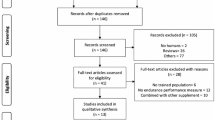Abstract
Phosphorus magnetic resonance spectroscopy (31P-MRS) was used to investigate the influence of maximal aerobic power (˙VO 2max) on the recovery of human calf muscle from high-intensity exercise. The (˙VOO2max) of 21 males was measured during treadmill exercise and subjects were assigned to either a low-aerobic-power (LAP) group (n = 10) or a high-aerobic-power (HAP) group (n = 11). Mean (SE) ˙VO 2max of the groups were 46.6 (1.1) and 64.4 (1.4) ml · kg−1 · min−1, respectively. A calf ergometry work capacity test was used to assign the same relative exercise intensity to each subject for the MRS protocol. At least 48 h later, subjects performed the rest (4 min), exercise (2 min) and recovery (10 min) protocol in a 1.5 T MRS scanner. The relative concentration of phosphocreatine (PCr) was measured throughout the protocol and intracellular pH (pHi) was determined from the chemical shift between inorganic phospate (Pi) and PCr. End-exercise PCr levels were 27 (3.4) and 25 (3.5)% of resting levels for LAP and HAP respectively. Mean resting pHi was 7.07 for both groups, and following exercise it fell to 6.45 (0.04) for HAP and 6.38 (0.04) for LAP. Analysis of data using non-linear regression models showed no differences in the rate of either PCr or pHi recovery. The results suggest that ˙VO2max is a poor predictor of metabolic recovery rate from high-intensity exercise. Differences in recovery rate observed between individuals with similar ˙VO2max imply that other factors influence recovery.
Similar content being viewed by others
Author information
Authors and Affiliations
Additional information
Accepted: 17 December 1996
Rights and permissions
About this article
Cite this article
Cooke, S., Petersen, S. & Quinney, H. The influence of maximal aerobic power on recovery of skeletal muscle following anaerobic exercise. Eur J Appl Physiol 75, 512–519 (1997). https://doi.org/10.1007/s004210050197
Issue Date:
DOI: https://doi.org/10.1007/s004210050197




